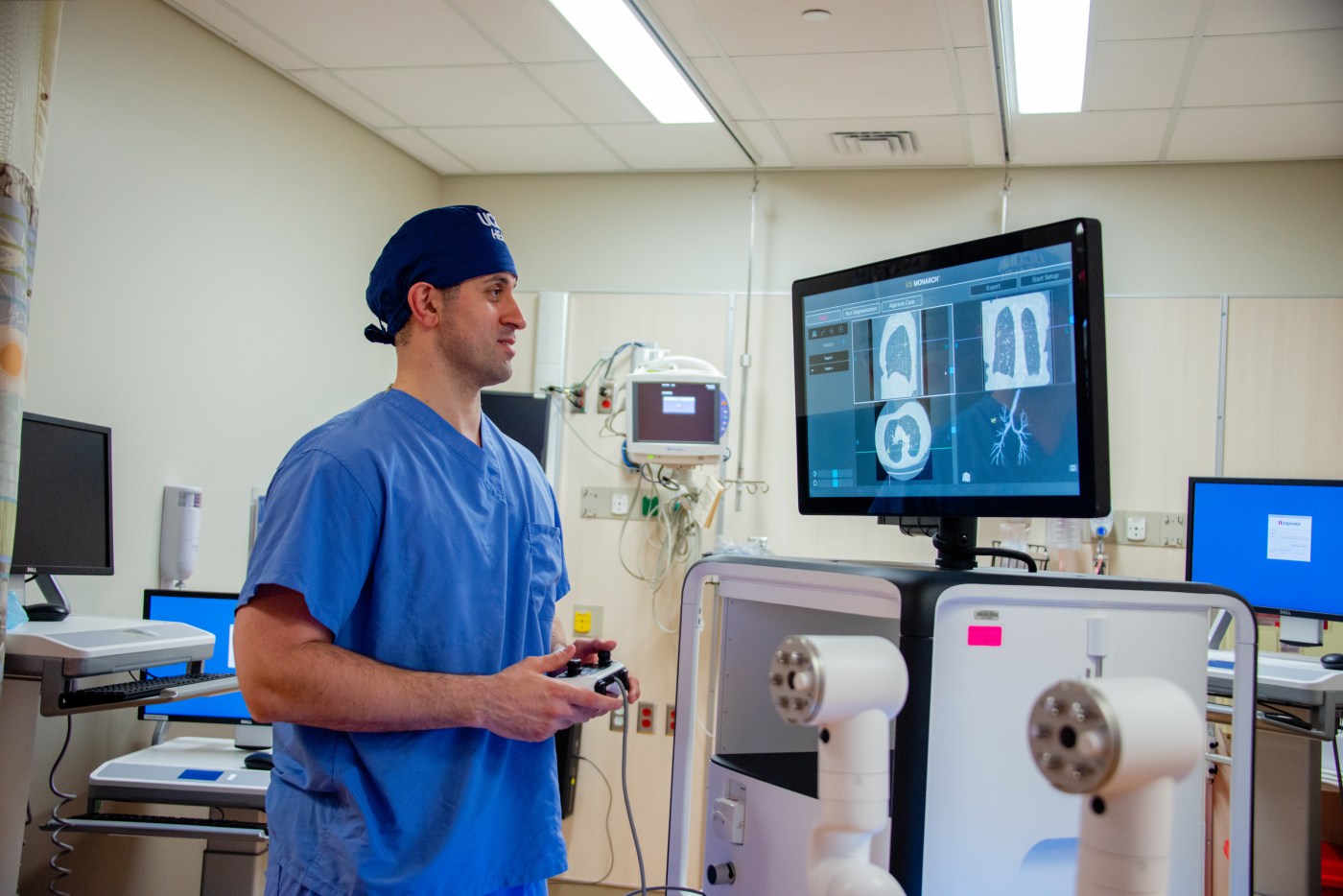Artificial intelligence (AI) is transforming the landscape of medical diagnostics at UConn Health, helping to identify abnormalities that could save lives. Recently, AI software detected a small abnormal area in the CT scan of a patient in her 20s suffering from pneumonia. This early identification led to an uncommon cancer diagnosis, allowing the athlete to remain active in her sport.
Dr. Omar Ibrahim, service chief for the Neag Cancer Center and director of interventional pulmonary at UConn Health, explained that typically, cancer screenings are not performed on patients in their 20s and 30s. The AI technology enhances the ability to catch suspicious findings that might otherwise go unnoticed. “It has a huge ability to catch so much more in a short amount of time,” he noted. “Every few days, we help a dozen or so patients who have risk findings that need investigation.”
The integration of AI into radiology and pulmonary medicine at UConn Health is enabling physicians to prioritize cases that require urgent attention. Despite this advancement, doctors emphasize that AI does not replace radiologists or medical professionals. Instead, it acts as a valuable tool to improve patient care.
While the benefits of AI in healthcare are significant, there are challenges, particularly concerning patient data security and job displacement fears among healthcare workers. The National Institutes of Health has stated that AI aims to complement, rather than replace, healthcare providers.
Detecting Abnormalities with Precision
Over the past few years, UConn Health has implemented twelve AI modules designed to detect life-threatening conditions in radiology examinations. These modules flag imaging studies for urgent review by radiologists when acute findings are suspected.
According to Dr. Michael Baldwin, an attending radiologist at UConn Health, one such module that evaluates intracranial hemorrhages demonstrates over 95% sensitivity and 94% specificity. “If you have a family member arriving in the ER with symptoms of chest pain, they want to be treated as soon as possible,” he stated. “It is reassuring to know that there is a system in the background flagging critically ill patients.”
The AI modules identify potential abnormalities, directing those cases to radiologists for further evaluation. Baldwin highlighted that while AI can suggest findings, it is essential for a physician to confirm any significant issues before communicating results to the patient’s care team.
In addition to diagnostic capabilities, Ibrahim has introduced an AI scribe into his practice. This tool listens to conversations and organizes them into notes, allowing him to focus more on patient interaction rather than documentation.
Despite the promising applications of AI, Baldwin cautioned that the technology is still in its early stages and may occasionally produce false positives. “Even when these modules flag studies, we must ensure that a physician is involved to provide an accurate interpretation,” he added.
Addressing Security and Future Developments
Security remains a primary concern regarding AI applications in healthcare. Ibrahim emphasized the importance of safeguarding patient data, stating that UConn Health’s cybersecurity team is dedicated to ensuring that all information is encrypted and protected from breaches.
Looking ahead, both Ibrahim and Baldwin express optimism about the future of AI in medicine. They anticipate that AI will evolve to incorporate various data sources, enhancing the support provided to healthcare professionals. However, they agree that the human element in patient care remains irreplaceable.
“I don’t think anyone would be happy knowing that they are being seen by an AI robot,” Ibrahim remarked. “What they want is a provider in the room because there is a human aspect to medicine.”
As AI technologies continue to develop, UConn Health stands at the forefront of integrating these advancements into patient care, promising a future where early detection and improved outcomes become the norm.
